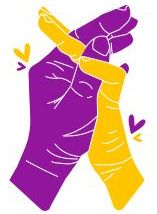Disability isn’t something to pity or fear—it’s a part of the rich human experience. Children with disabilities are not defined by their challenges but by their abilities, potential, and humanity. As a community, we all share the responsibility to create an environment where every child feels valued, seen, and included.
Raising awareness about disabilities—especially among children and families—helps build a more empathetic, inclusive society. Here’s how we can start.
🌍 Why Disability Awareness Matters
- Promotes Inclusion: When children learn that everyone has different strengths and challenges, they become more accepting and inclusive.
- Reduces Stigma: Awareness breaks down myths and encourages understanding instead of fear or awkwardness.
- Empowers Kids with Disabilities: When they’re accepted and included, children are more likely to thrive and participate fully in community life.
- Builds Stronger Communities: Inclusive communities are kinder, more cooperative, and more innovative.
🧠 What Is Disability Awareness?
Disability awareness means understanding that disabilities can be visible (like using a wheelchair) or invisible (like autism or learning differences). It’s about:
- Respecting individual differences
- Using inclusive language
- Offering support, not sympathy
- Encouraging participation rather than exclusion
🧒 Teaching Children About Disabilities
Kids are naturally curious and open-minded. The earlier we introduce them to the concept of disabilities, the more likely they are to grow up accepting and supportive.
Tips for Parents and Teachers:
- Use Books and Videos: Share stories that feature characters with disabilities in positive, everyday roles
- Encourage Questions: Create a safe space for kids to ask and learn without judgment
- Model Inclusive Language: Say “a child with autism” instead of “an autistic child” (person-first language)
- Promote Play and Friendship: Encourage children to play and interact with kids of all abilities
💬 How to Talk to Children About Disabilities
Keep it simple, honest, and respectful.
Examples:
- “Some kids use wheelchairs to help them move around, just like we use bikes or scooters.”
- “Everyone learns differently—what’s easy for you might be harder for someone else, and that’s okay.”
- “We’re all unique. That’s what makes the world interesting.”
🏫 What Communities Can Do
1. Host Inclusive Events
Organize storytimes, sports days, or art workshops that welcome children of all abilities.
2. Offer Disability Awareness Programs
Invite guest speakers, therapists, or parents to schools and community centers to share real experiences.
3. Ensure Accessibility
Make playgrounds, schools, and public spaces usable for kids with mobility, sensory, or learning differences.
4. Celebrate Differences
Use events like International Day of Persons with Disabilities (Dec 3) to highlight stories of resilience and achievement.
👪 The Role of Families and Caregivers
Families of children with disabilities are often their biggest advocates. Community support means:
- Listening without judgment
- Offering help when needed
- Celebrating milestones together
- Creating space for their voices in community decisions
🌟 Final Thought
Disability awareness is not just a message—it’s a movement. By teaching our children to see ability, not just disability, we build a community that truly leaves no one behind. Every child deserves to be included, respected, and celebrated—just as they are.
Let’s raise a generation of kids who don’t just tolerate differences, but embrace them.

